The first half of the second day of the Import Meet Street Car Competition was broken into three categories: Peak Horsepower, Power Delivery, and Ride Quality. A quick reference guide for the competitors can be found here.
Photos by Ryan Cutuli, Randy Montgomery, Sam Fu, and Nick Poirier. Text by Matt Haugness.
Watch Import Car Dyno – IMSCC 2013 on YouTube
Peak Horsepower
Day two of the IMSCC began at Carb Connection in Kirkland, Washington on Saturday, August 10, 2013. Carb Connection has an in-ground AWD Dynojet dynamometer that was well suited for the variety of drivetrain configurations in the group. The goal with the peak horsepower category was simple: determine which car produced the most horsepower.
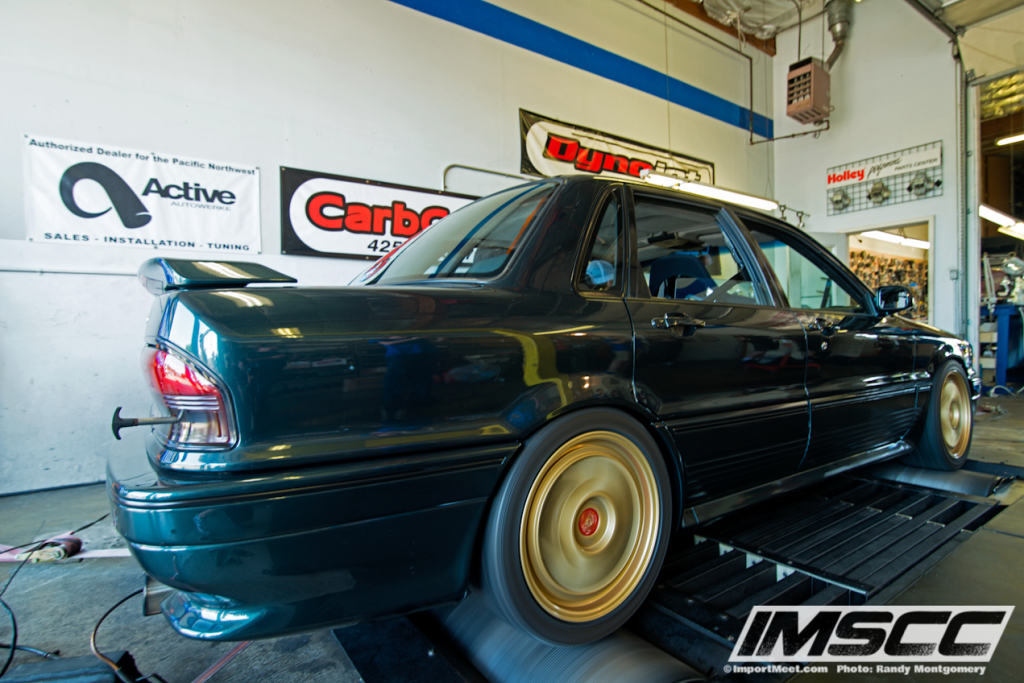
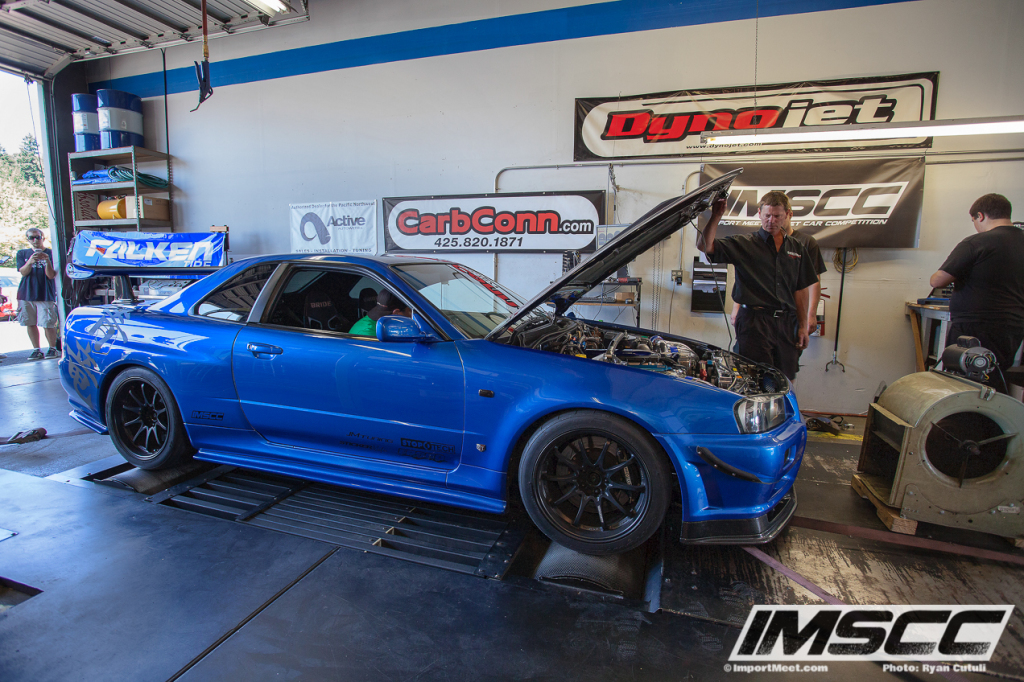 Each car was given three pulls on the dyno, and their highest horsepower graph was used to calculate their points. The RX-7, 240SX, and Galant all made a little over 400 horsepower to the wheels. Quentin in the R35 GT-R opted for only two pulls on the dyno since both came within two horsepower of each other. His best ended up being 512 horsepower.
Each car was given three pulls on the dyno, and their highest horsepower graph was used to calculate their points. The RX-7, 240SX, and Galant all made a little over 400 horsepower to the wheels. Quentin in the R35 GT-R opted for only two pulls on the dyno since both came within two horsepower of each other. His best ended up being 512 horsepower.
Katie Smith went into the event knowing that her WRX was going to be one of the lower horsepower cars so she wasn’t surprised when it made 279 horsepower. This was the lowest horsepower of the group and she received the minimum 10 points in the category.
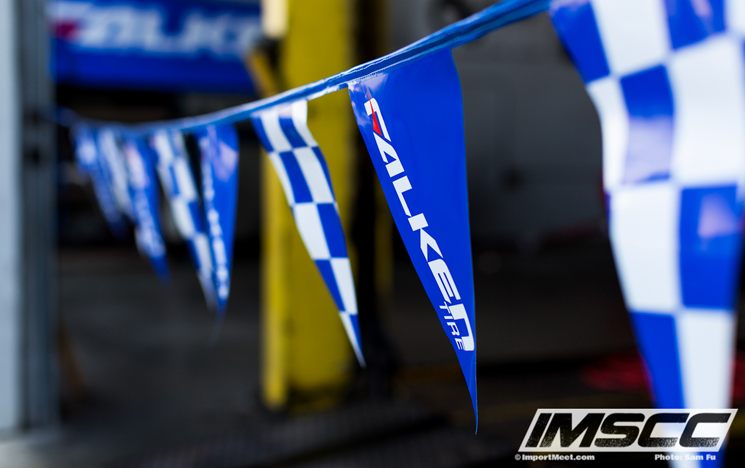 The next lowest horsepower car was Nathan’s Evo, which produced 384 horsepower. Going back to the stock turbocharger really limited his Evo in this portion of the competition, but it was still an impressive number for a relatively stock engine on E85.
The next lowest horsepower car was Nathan’s Evo, which produced 384 horsepower. Going back to the stock turbocharger really limited his Evo in this portion of the competition, but it was still an impressive number for a relatively stock engine on E85.
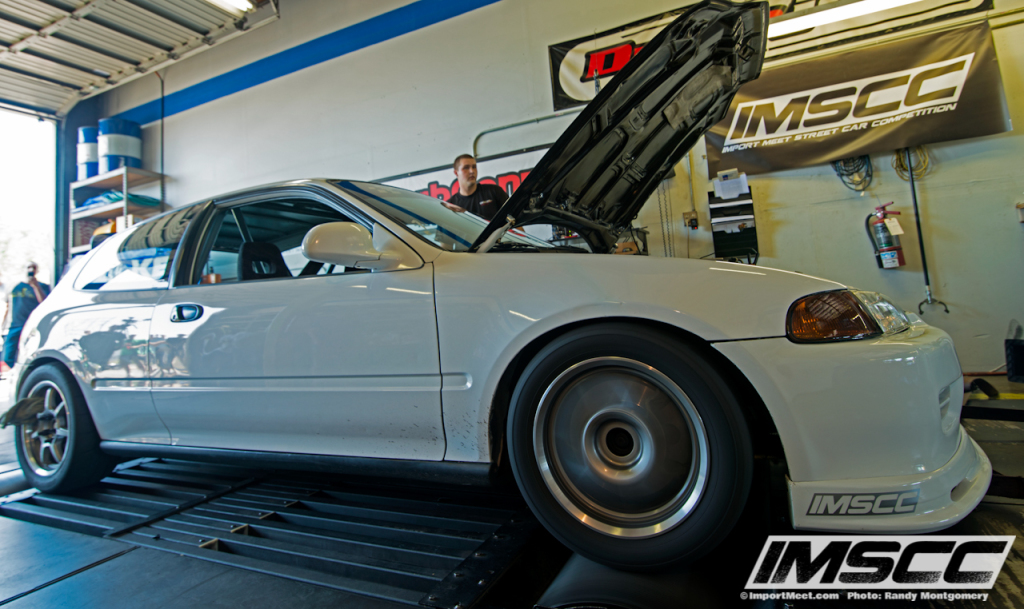 After spending a good portion of the night replacing the axles on his Civic, Guillaume’s string of bad luck wasn’t over. Two pulls into his maximum of three he realized that the low boost tune was flashed to the ECU. He tried to re-flash it right before his final pull but accidentally switched the ignition on at the wrong time so the high boost tune didn’t transfer properly. Since it was his only chance, he was forced to stick with his best of 456 horsepower. He was expecting high 500 horsepower so this was a big disappointment to Guillaume.
After spending a good portion of the night replacing the axles on his Civic, Guillaume’s string of bad luck wasn’t over. Two pulls into his maximum of three he realized that the low boost tune was flashed to the ECU. He tried to re-flash it right before his final pull but accidentally switched the ignition on at the wrong time so the high boost tune didn’t transfer properly. Since it was his only chance, he was forced to stick with his best of 456 horsepower. He was expecting high 500 horsepower so this was a big disappointment to Guillaume.
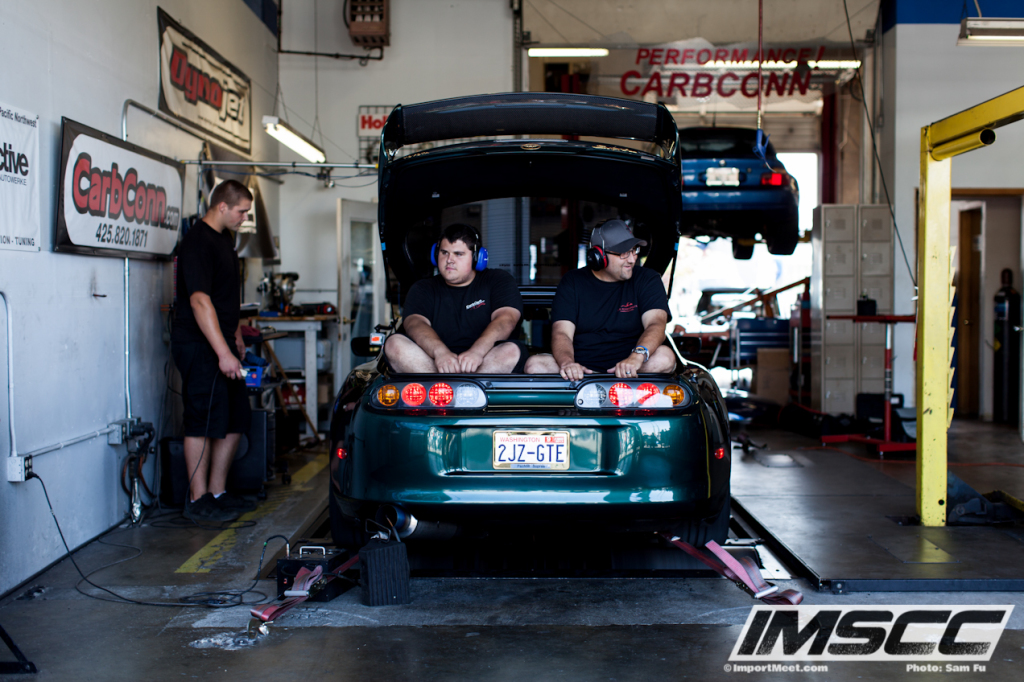 Both the Supra and the R34 Skyline were running E85 for the competition so each planned on getting into the high 600’s or low 700’s on the dyno. When it came down to the numbers the Supra produced 677 horsepower while the R34 Skyline produced 614. The lower than expected power numbers on the Skyline could have been attributed to a change in altitude, or being on a different dyno than they were used to (they traveled from Idaho for the IMSCC). The Supra produced the highest horsepower of the group, so Stu received the maximum 110 points. Since the R34 Skyline was still relatively close in terms of maximum horsepower Johnny received 94.2 points.
Both the Supra and the R34 Skyline were running E85 for the competition so each planned on getting into the high 600’s or low 700’s on the dyno. When it came down to the numbers the Supra produced 677 horsepower while the R34 Skyline produced 614. The lower than expected power numbers on the Skyline could have been attributed to a change in altitude, or being on a different dyno than they were used to (they traveled from Idaho for the IMSCC). The Supra produced the highest horsepower of the group, so Stu received the maximum 110 points. Since the R34 Skyline was still relatively close in terms of maximum horsepower Johnny received 94.2 points.
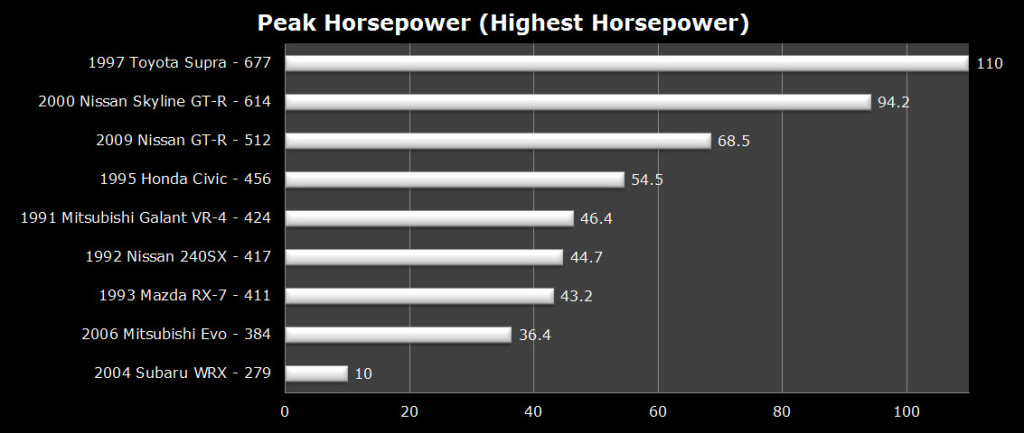 Click here to read about how the points were determined.
Click here to read about how the points were determined.
Power Delivery
Getting as much objective data as possible for the IMSCC was the goal for the dyno portion of the competition. Rather than relying solely on the peak horsepower category as the deciding factor for this event power delivery was created early in the competition design process. The intent with this category was to award the most points to cars that had the largest useable power band even if they performed poorly in the peak horsepower category.
The power delivery of each car was determined using their highest peak horsepower dyno graph. The start of the car’s useable power band was the RPM in which the car produced over 90% of its peak torque value. The end was the RPM before it dropped below 90% of its peak torque. An example of how this was calculated can be seen below with the LS1 swapped Mazda RX-7’s dyno graph.
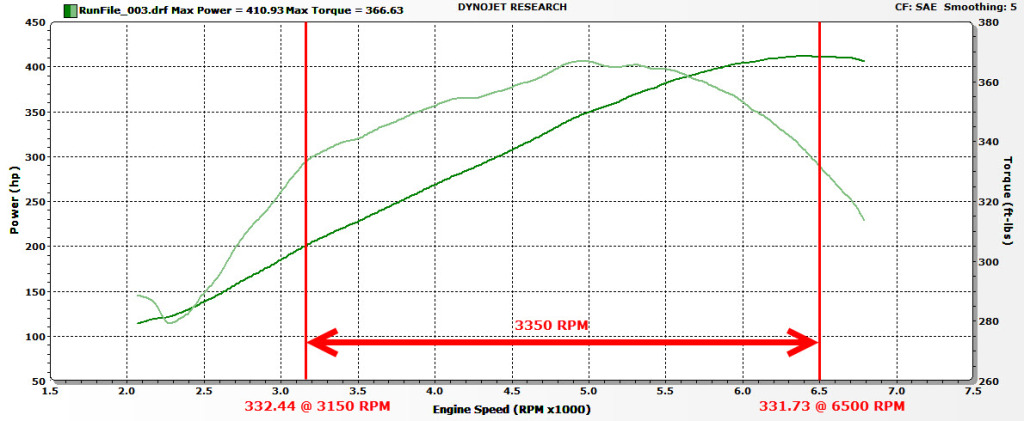 On the graph the RX-7 produced over 90% of its peak torque from 3150 RPM to 6500 RPM. This meant that the RX-7 had a large power band of 3350 RPM. This value was enough to put the RX-7 in second place for this category.
On the graph the RX-7 produced over 90% of its peak torque from 3150 RPM to 6500 RPM. This meant that the RX-7 had a large power band of 3350 RPM. This value was enough to put the RX-7 in second place for this category.
The WRX made up for the low horsepower number in the previous category by having a power band of 3050 RPMs. The Supra and Galant both performed poorly with RPM ranges of 2100 and 1900 respectively. The Galant was the worst performing car in the power delivery category and being in last place earned Mark only 5 points.
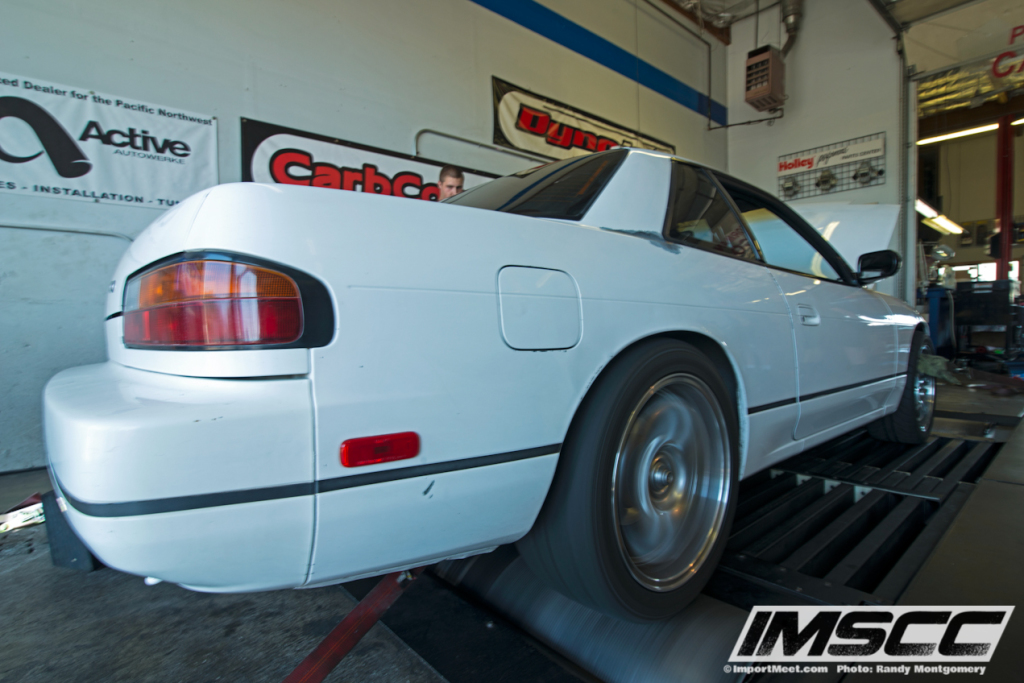 The biggest surprise of the day was that the 240SX had a huge power band of 3500 RPM. The car made above 90% of the peak torque up until the redline of the engine. This gave Steve the maximum of 55 points in the Power Delivery category.
The biggest surprise of the day was that the 240SX had a huge power band of 3500 RPM. The car made above 90% of the peak torque up until the redline of the engine. This gave Steve the maximum of 55 points in the Power Delivery category.
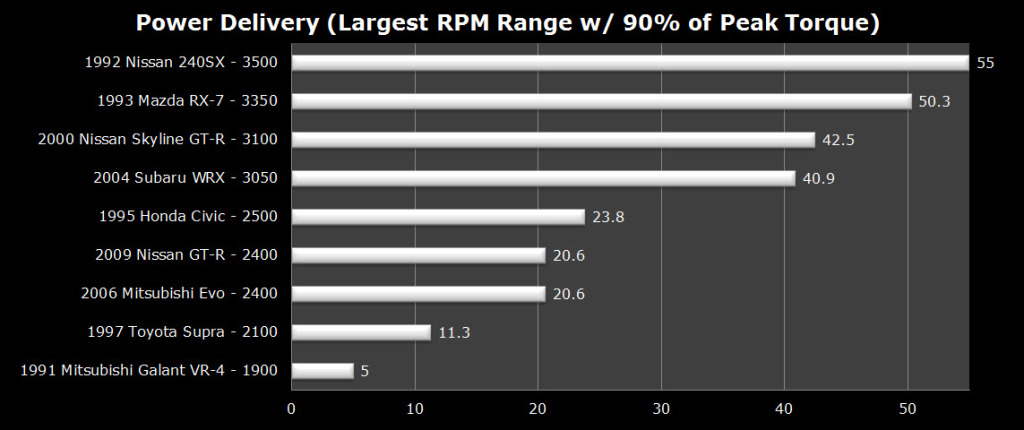 Click here to read about how the points were determined.
Click here to read about how the points were determined.
Ride Quality
While the competitors were waiting for their turn on the dyno another category was being done in parallel. Our official model for the event, Elise Detris, was the judge of the ride quality portion of the IMSCC. Elise rode in each car on the back roads of Kirkland so that she could give an unbiased female’s opinion. The key areas that she was judging were comfort, practicality, audio system, harshness, and overall impression.
After returning from each ride, Elise used a 50-point judging sheet to determine the scores for the cars.
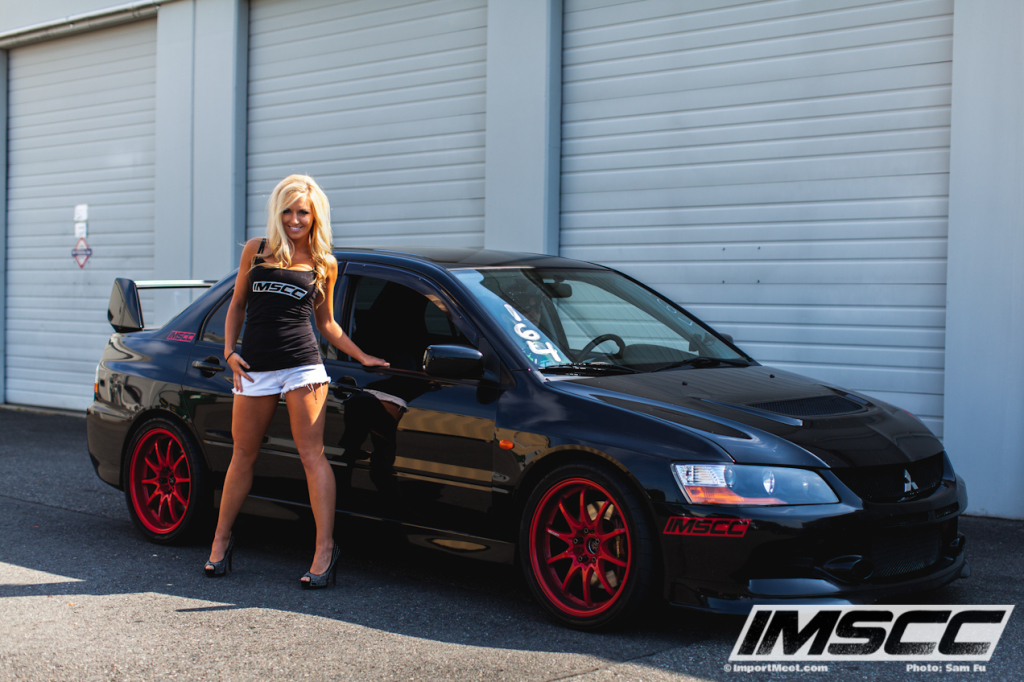 The Evo, Supra, WRX, Galant, and 240SX all placed in the middle of the group with point values in the low to mid 30’s.
The Evo, Supra, WRX, Galant, and 240SX all placed in the middle of the group with point values in the low to mid 30’s.
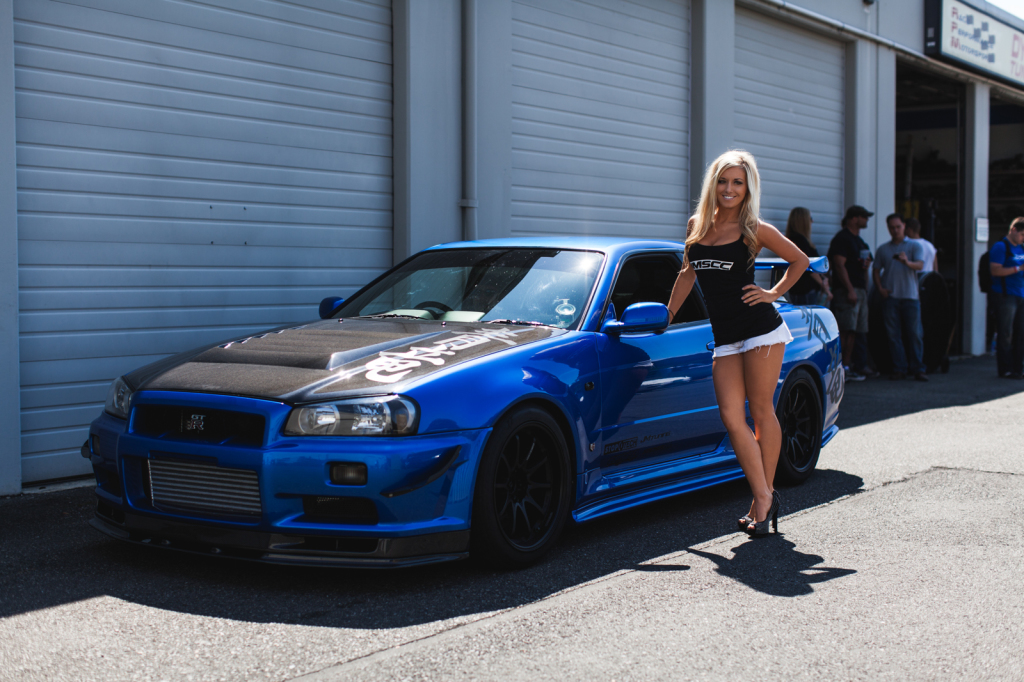 The R34 Skyline, R35 GT-R, and RX-7 all placed towards the top. The highest score of 48 out of 50 was given to the R34 Skyline. According to Elise the performance, appearance, sound system, and the fact that it still had air conditioning all helped it take first place in this category. After being converted to the IMSCC point system the R34 Skyline ended up receiving the maximum of 55 points. Right behind it was the R35 GTR with 46/50 (51.7 IMSCC points), and the RX-7 with 39/50 (40 IMSCC points).
The R34 Skyline, R35 GT-R, and RX-7 all placed towards the top. The highest score of 48 out of 50 was given to the R34 Skyline. According to Elise the performance, appearance, sound system, and the fact that it still had air conditioning all helped it take first place in this category. After being converted to the IMSCC point system the R34 Skyline ended up receiving the maximum of 55 points. Right behind it was the R35 GTR with 46/50 (51.7 IMSCC points), and the RX-7 with 39/50 (40 IMSCC points).
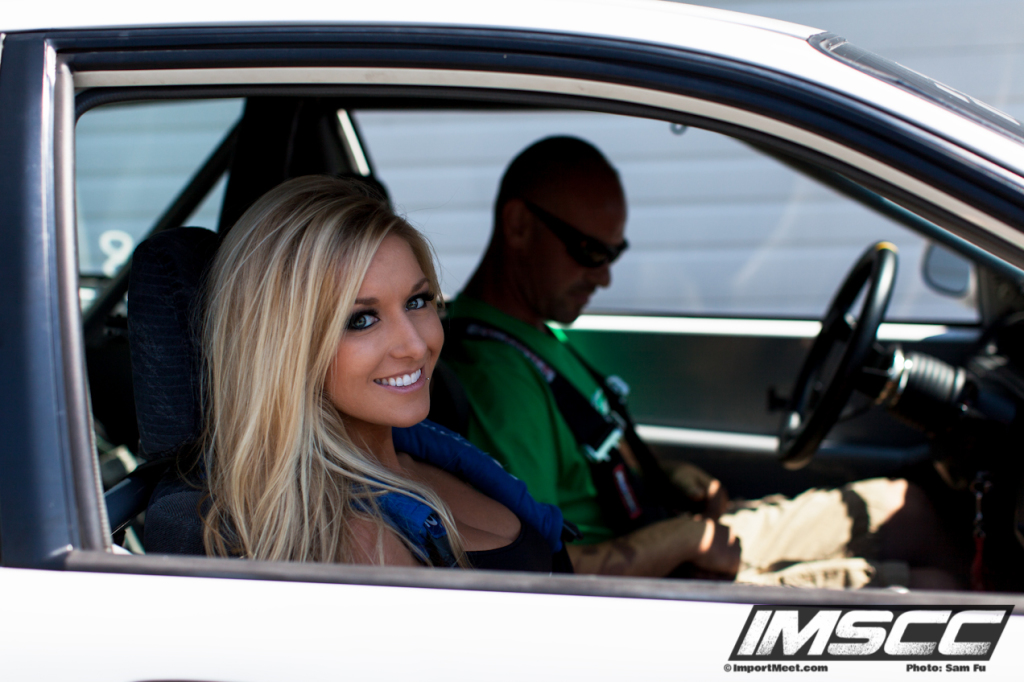
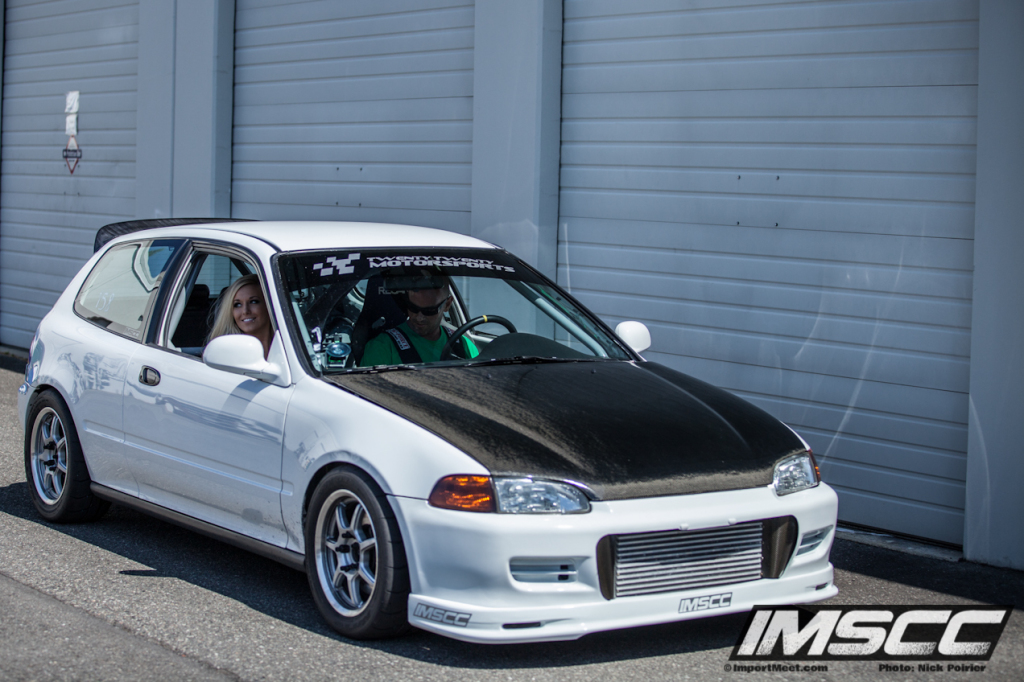 By a large margin the Civic placed last in this category. Even though Elise thought it had one of the smoothest rides out of all of the cars, the lack of carpet, interior panels, and a functioning sound system brought the score down tremendously. She also had a tough time climbing over the welded-in roll cage. She scored the Civic at 18/50 giving Guillaume the minimum of 5 out of the possible 55 points in this category.
By a large margin the Civic placed last in this category. Even though Elise thought it had one of the smoothest rides out of all of the cars, the lack of carpet, interior panels, and a functioning sound system brought the score down tremendously. She also had a tough time climbing over the welded-in roll cage. She scored the Civic at 18/50 giving Guillaume the minimum of 5 out of the possible 55 points in this category.
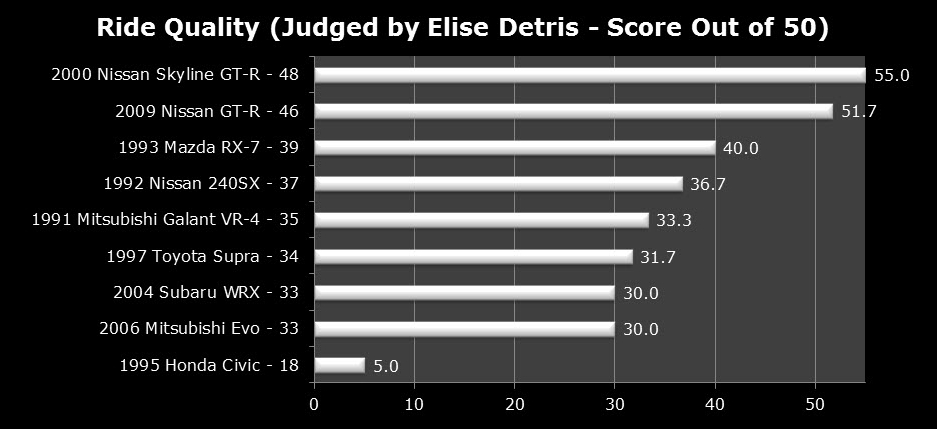 Click here to read about how the points were determined.
Click here to read about how the points were determined.
Overall Points – Middle of Day Two
By the middle of day two Johnny and his 2000 Nissan Skyline GT-R took a huge fifty point lead over second and third place by getting the highest ride quality score, and performing well in peak horsepower and power delivery. Placing first in peak horsepower moved Stu Hagen and his 1997 Toyota Supra into second place. Performing above average in the first three categories of the day moved Matt Korthuis with his LS1 swapped 1993 Mazda RX-7 into third place.
Placing well in power delivery wasn’t enough to bring Katie Smith and her 2004 Subaru WRX closer to the rest of the competitors and she remained in last place.
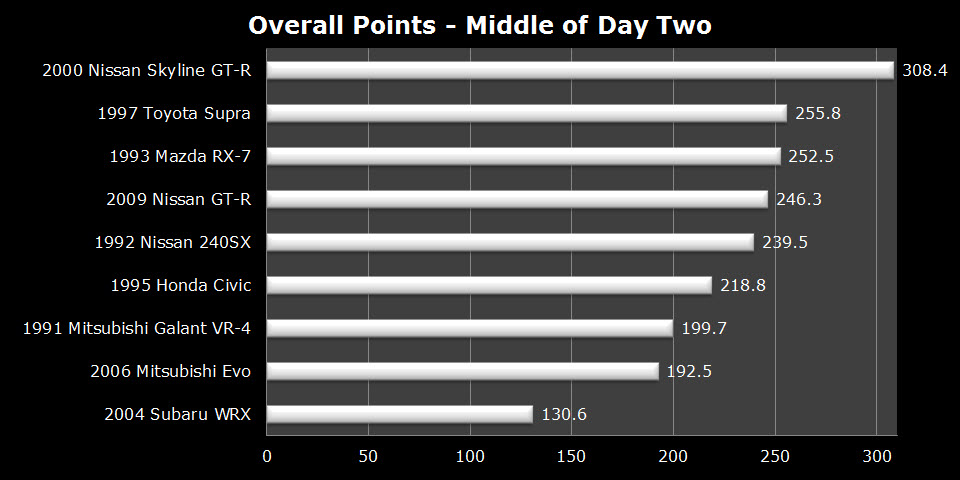 Previous IMSCC Results:
Previous IMSCC Results:
Day One: Retail Price & Drag Racing

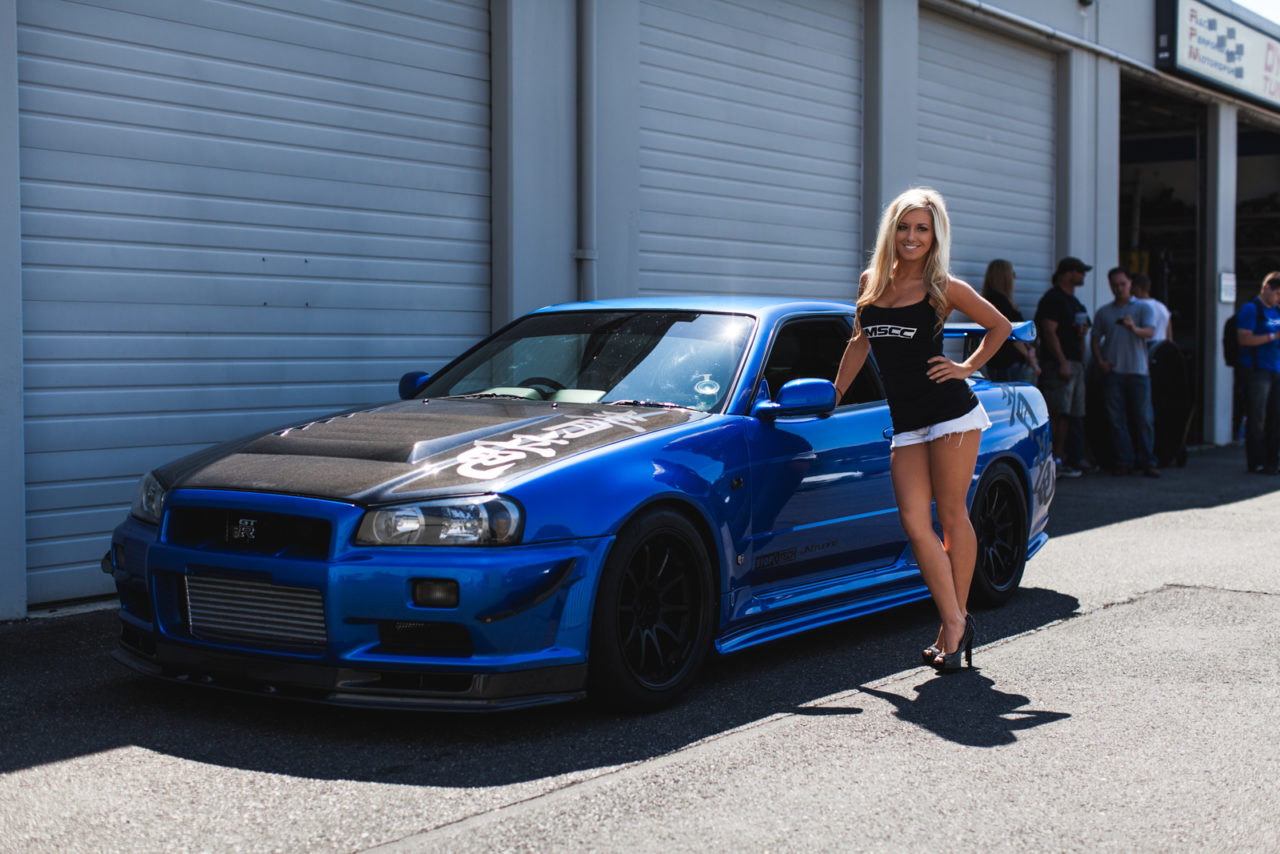



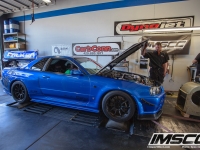
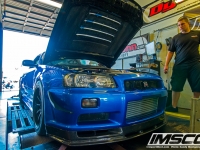
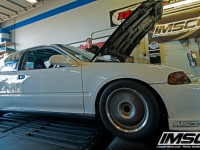
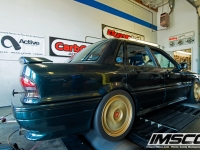
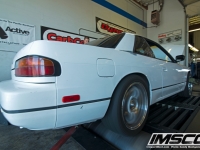
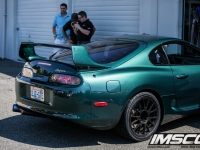
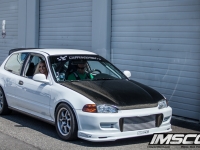
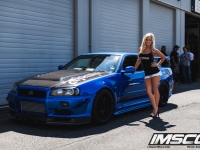

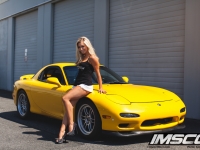
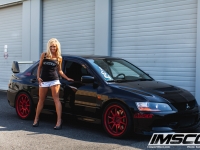
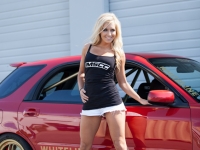


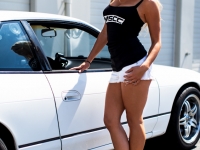
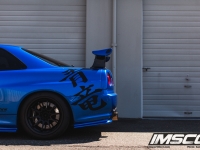
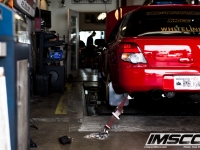
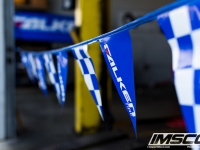
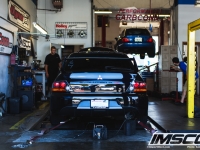
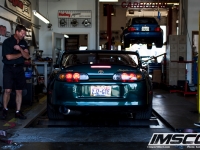

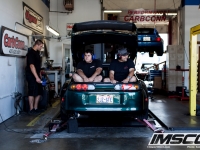
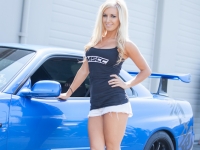

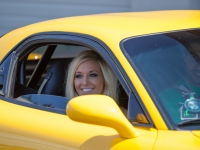

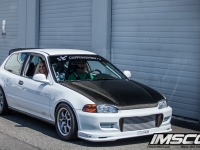

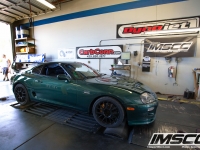
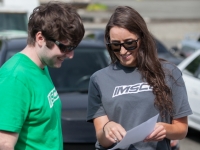
4 Comments
What a shit show. You guys trying out for the next Fast and Furious movie? Giving the car scene a terrible name.
Haha…. I don’t even know what to say after that comment
“SERIOUSLY” cool name bro… You’re the only one giving the car scene a terrible name… Seriously. haha
From muscle cars to ricers, the car scene is always going to have a terrible name.
But you know… to each their own.